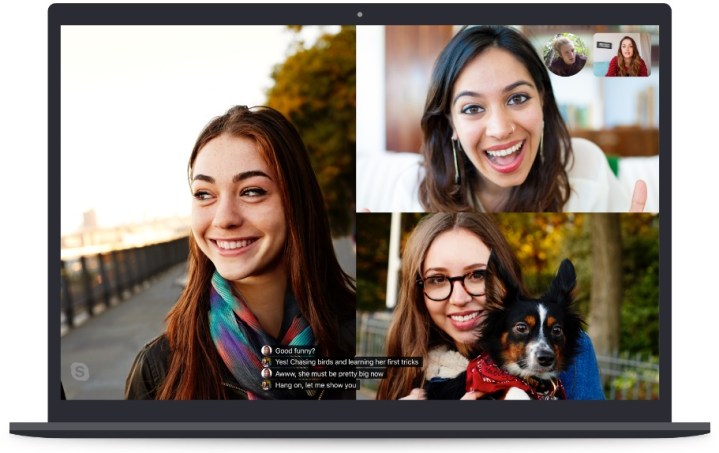
In addition to celebrating the United Nations International Day of Persons with Disabilities by launching a real-time translation and transcription feature for PowerPoint presentations, Microsoft is bringing the feature to deliver subtitles to its Skype video chat software. Though the software will be a big benefit for those who rely on assistive technologies every day, captions and subtitles during video calls may also be beneficial to a wider population of Skype users, ranging from foreign language speakers or those who want to verify what was just said on a call in an area of spotty coverage where the audio feed may be cutting in and out.
“This new feature works on the latest version of Skype for one-on-one calls with a friend, coworker, or to any phone number, as well as in group calls with a work team or friend group,” Microsoft said of the new live captioning feature on Skype. “The live captions and subtitles feature provides a more inclusive experience for everyone in the Skype community, especially for people who are deaf or hard of hearing.”
In this release, Microsoft stated that captioning will auto-scroll during your call, but additional viewing options will be arriving with a future update. “Coming soon, you’ll find additional viewing options, including the ability to scroll through them in their own side window, so you don’t miss a moment — be it in a video or in the live subtitles,” Microsoft said. More than 20 languages and dialects will be supported.
If you want to enable the feature on select calls, Microsoft said that you can navigate to the “more +” button during a video call and select “Turn subtitles on.” If you want this feature to be persistently enabled for all Skype calls, simply click on your profile picture, select “Settings,” then select “Calling.” From that menu, select “Call subtitles” and then enable the toggle for, “Show subtitles for all voice and video calls.”
Skype subtitles and captioning are part of Microsoft’s broader push to leverage the power of artificial intelligence to enable a workplace without barriers. Earlier this year at the company’s Build 2018 conference, Microsoft announced its A.I. for Good to enable developers to create A.I.-powered tools to help those with disabilities. Microsoft also showcased its conference room of the future where the power of A.I. was used to transcribe and translate conference calls, allowing foreign language speakers and those with disabilities to collaborate with their peers.
Editors' Recommendations
- OpenAI and Microsoft sued by NY Times for copyright infringement
- Are we about to see ‘the iPhone of artificial intelligence’?
- ChatGPT website traffic has fallen for the first time
- Google Bard vs. ChatGPT: which is the better AI chatbot?
- I’ve seen the (distant) future of AI web search – here’s where it’s amazing, and where it struggles


